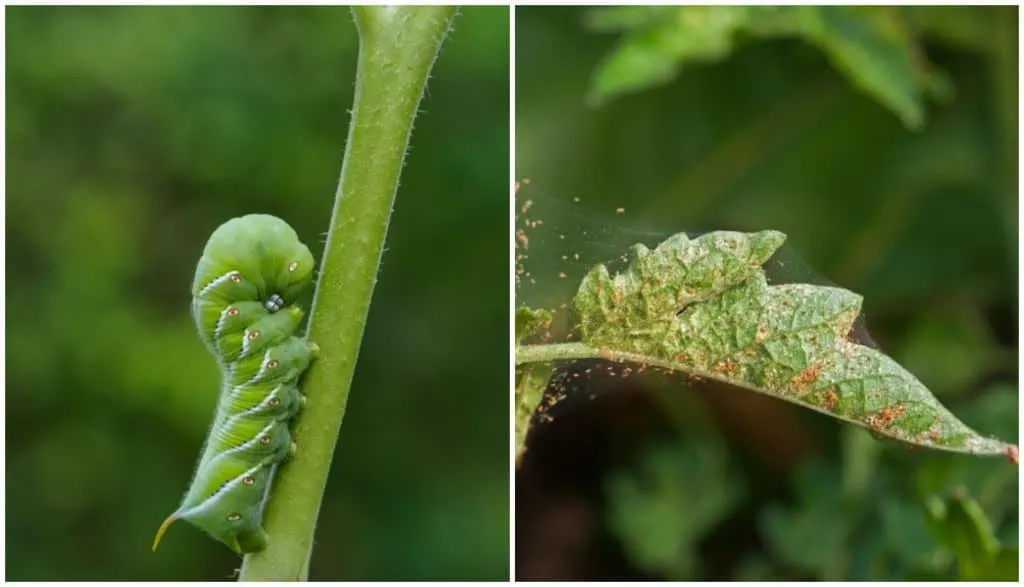
Pests and diseases are tough challenges every home gardener faces. Unfortunately for tomato growers, tomatoes are susceptible to a large variety of both.
When it comes to pests, matters are only made worse. They not only attack your plants, but they can also spread diseases themselves. In other words, if you haven’t already, you should prioritize pest control in your tomato garden.
These 10 common tomato pests are the worst ones to watch out for.
1. Aphids
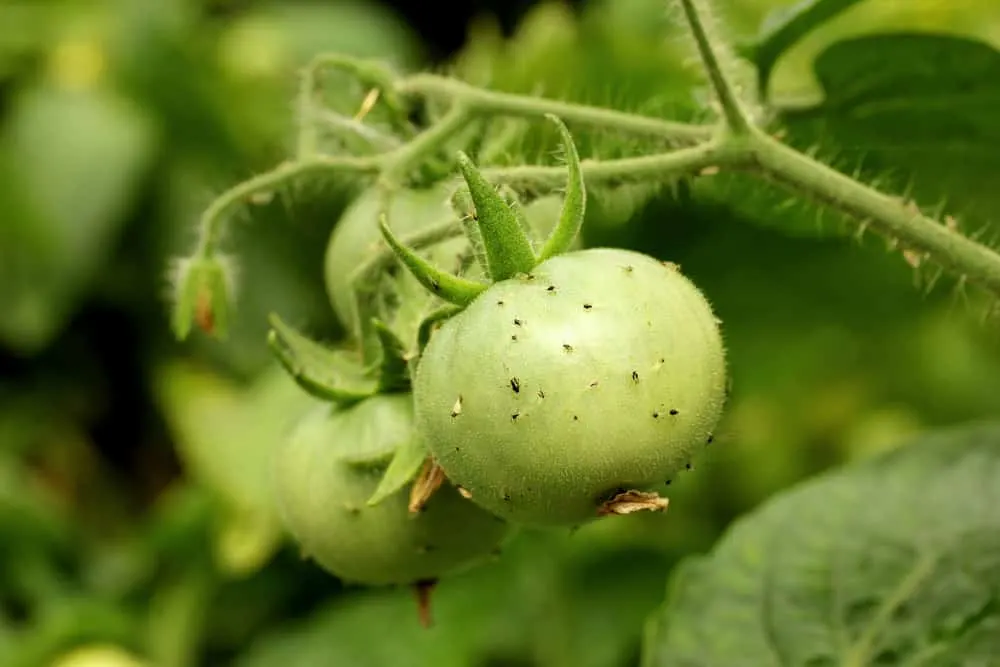
The most common tomato pest, but also one of the most destructive, is the aphid. These critters have soft pear-shaped bodies and are typically white, black, brown, or even pink. Aphids affect a massive range of plants, including relatives of the tomato, potatoes and eggplants.
You will find them settling on new stems and the underside of young leaves. They are sap-sucking insects and will leave a sticky substance behind, which attracts various other pesky insects.
Despite being considered one of the most destructive, especially in more temperate climates, small infestations aren’t much of an issue. However, if left untreated, they will reduce your plant yield, and may ultimately kill the plant.
Luckily, aphids are easy to evict. We’ve dedicated an entire article to the subject.
Their small size means they can easily be wiped or picked off and killed using your fingers. Further, you could spray them off using a water spray bottle. The jet of water will blast them off the tomato plant, leaving no damage behind. A natural soap mixture applied using a spray bottle is another common remedy used to suffocate the bugs.
For extreme cases, pruning or pinching affected leaves or other parts of the plant may be necessary.
To prevent aphid infestations plant trap crops (like nasturtiums) to draw them away from your tomatoes, and choose plants that will attract predatory insects, such as ladybugs and hoverflies.
2. Cutworms
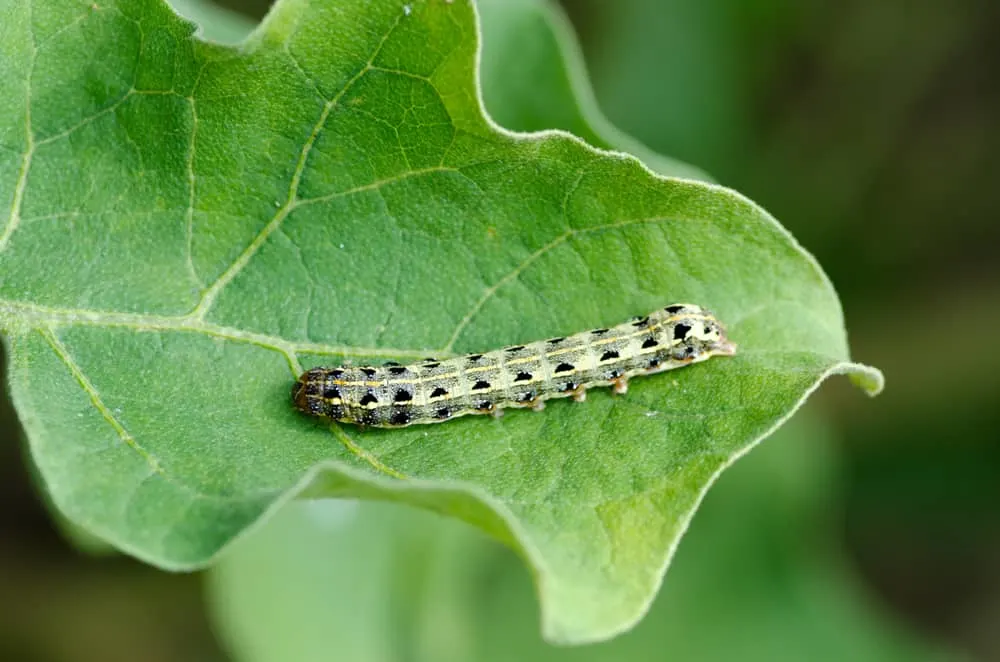
Cutworms are capable of destroying a tomato plant overnight. These grey or brown caterpillars with black or yellow spots and are approximately two inches long and incredibly damaging.
These stealthy caterpillars work at night, leaving large holes in your tomatoes. But the fruit is not the only victim. Seedlings are typically the most vulnerable, but cutworms attack the stems too, eventually causing the plant to collapse. During the day, they hide beneath the soil or under plant debris.
The best way to prevent cutworms from taking hold is to till the soil frequently and remove all plant debris before planting tomatoes. Collars around the base of the stem are also known to deter the worms. The second you spot a cutworm, simply pick them off with your hands.
3. Flea beetles
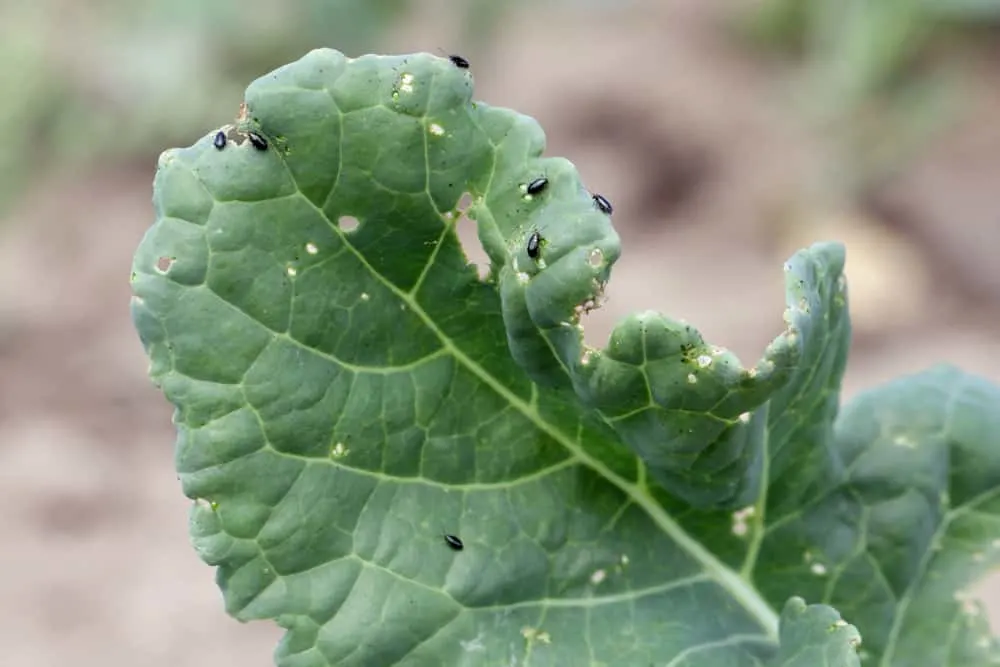
These little jumping bugs are shiny dark brown or black beetles, resembling fleas, sometimes with white or yellow stripes. Adults grow to only one-tenth of an inch. Germinating seeds are the most vulnerable to flea beetles, and they often carry many bacterial and viral diseases that can be detrimental to plant health.
As with cutworms, rotate crops, remove any debris, and till your soil.
A way of controlling infestations includes dusting diatomaceous earth over your plants. Diatomaceous earth is used to prevent and control several other infestations of pests on tomato plants, and other plants in home gardens.
There are a few good ways to prevent flea beetles from even settling into your soil and foliage, including using row covers and placing yellow sticky traps to capture adults.
4. Root-Knot Nematodes
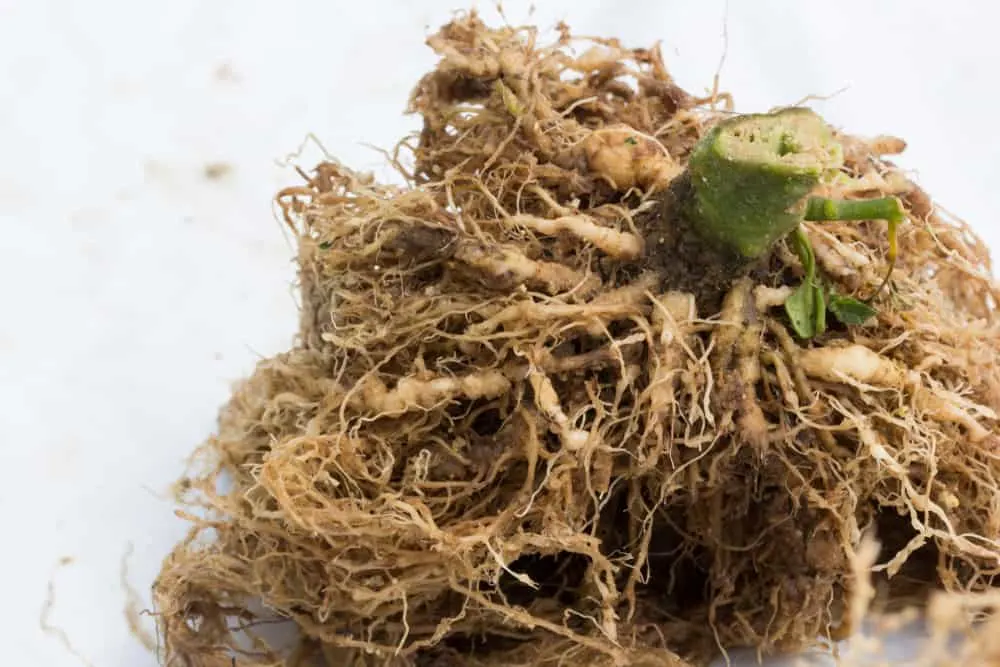
There are several nematode species, some of which are even used to control harmful pests. However, root-knot nematodes are one of the bad bugs.
These tiny worms cause wilting, yellow foliage, and stunting in plants. Further, as evidenced by their name, they cause swelling and knob-like growths on tomato roots. Root-knot nematodes are most common in warm areas with short winters.
These pests are not easy to control. They often hitch a ride on garden tools and boots, so the fundamental takeaway is good gardening hygiene.
Rotation of crops remains extremely important. Nematodes take several seasons to establish themselves into the soil. Crop rotation and tilling the soil will prevent them from becoming entrenched.
Planting nematode-resistant tomatoes is a perfect natural preventative measure. These will have an “N” listed next to their names.
5. Blister Beetles
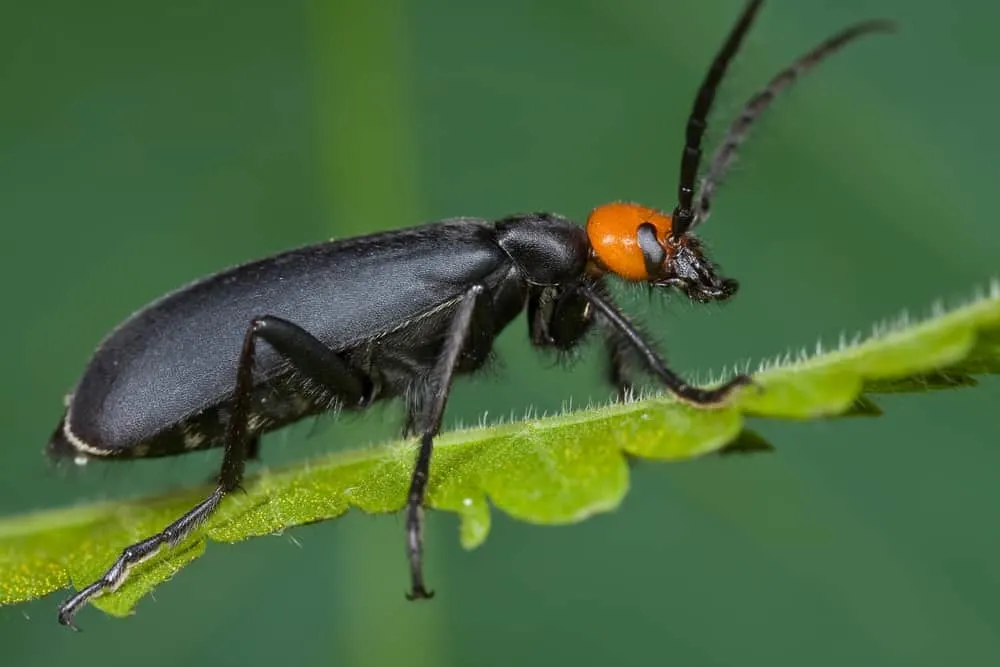
Blister beetles have a big appetite for tomato foliage and, if left unattended, will completely defoliate your plant. As damaging as they are to tomato plants, and many others, they are best known for what they do to humans. When crushed or even injured, they release the blistering agent, cantharidin.
Blistering beetles are black, red, or grey with stripes. They are most common in the Midwest, along with the eastern and southern parts of the US.
The best ways to control this pest are by picking them off with gloved hands and removing the damaged plants quickly. When picking them off, drop the beetles into a small bucket filled with soapy water, to prevent them from flying off.
If swarms of blister beetles are an issue in your region, protect your tomato plants using well-anchored row covers.
6. Hornworm
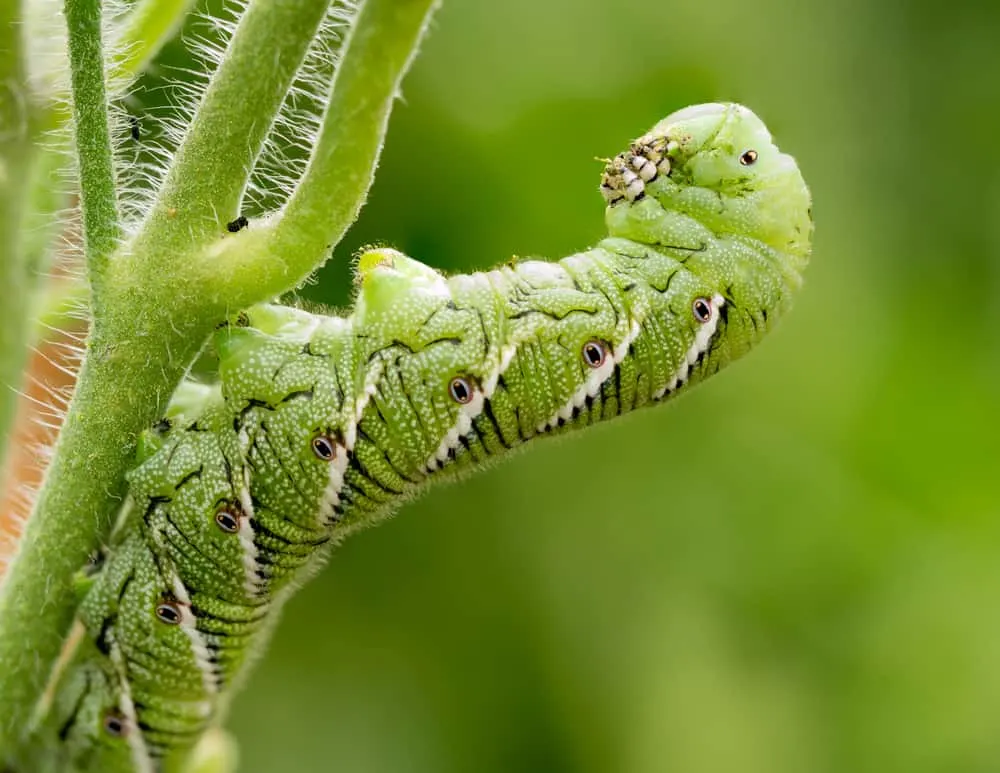
Another harmful caterpillar species is the hornworm. These pests are larger than most, growing to about three inches long. They blend well with tomato and other plant foliage due to their light green color; making them difficult to spot and get rid of. Tomato hornworms specifically have a straight black horn, making them easy to identify once spotted.
They are capable of removing the leaves of an entire plant, and (though very rarely) may attack the surface of tomato fruits. They also lay eggs on the undersides of the leaves.
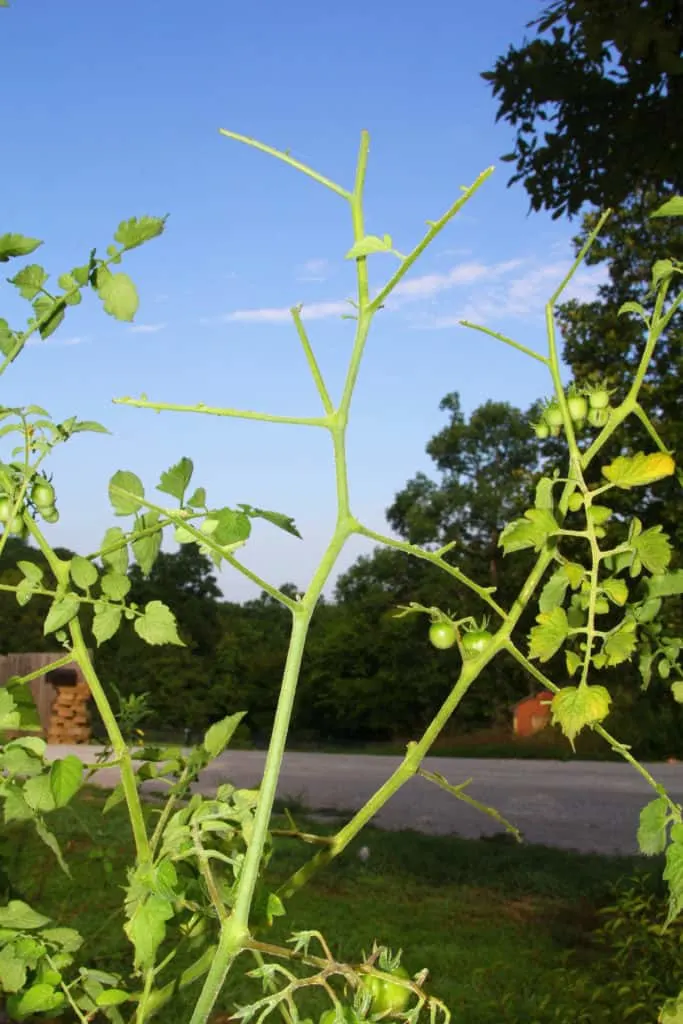
Due to their size, picking them off by hand is the easiest solution.
Hornworms can normally be found on the underside of leaves. Do a full sweep of all your tomato plants, and any surrounding susceptible plants, to catch these large worms in the act. Once you’ve picked them off, move them far away from your crops. Keep an eye out for further infestations, in case you didn’t catch them all the first time around.
7. Slugs and Snails
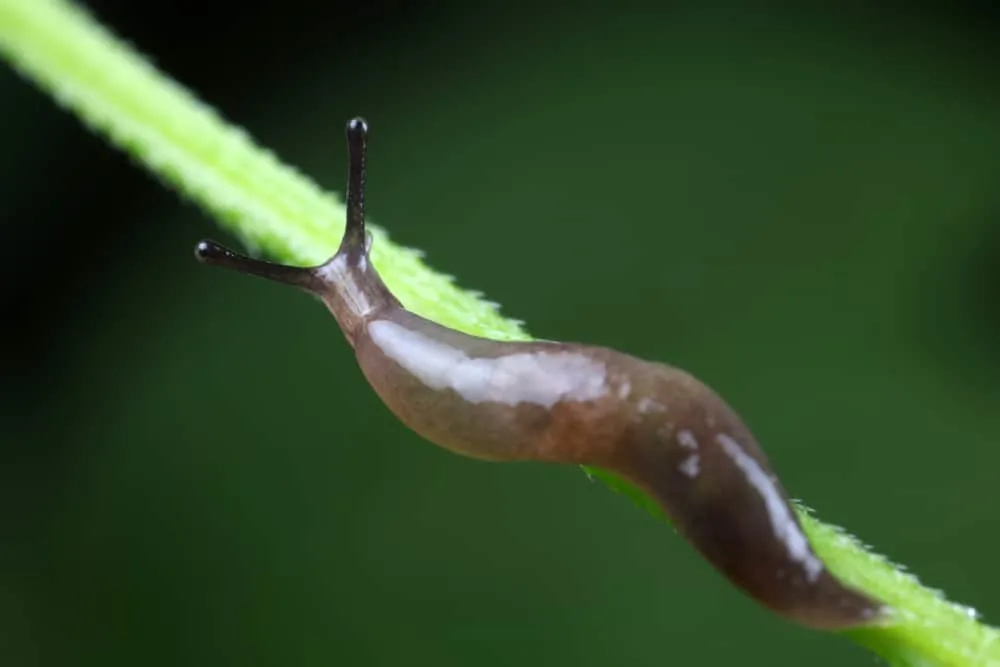
Slugs and snails are common garden critters. Harmless and cute as they may seem, their eating habits will severely damage tomato plants. They leave behind large holes in foliage and fruit, along with a trail of slime. They enjoy moist environments and are most active at night, making them difficult to spot.
The key is population control. The best ways to keep slugs and snails of tomatoes are by picking them off, changing watering practices, or using a beer trap.
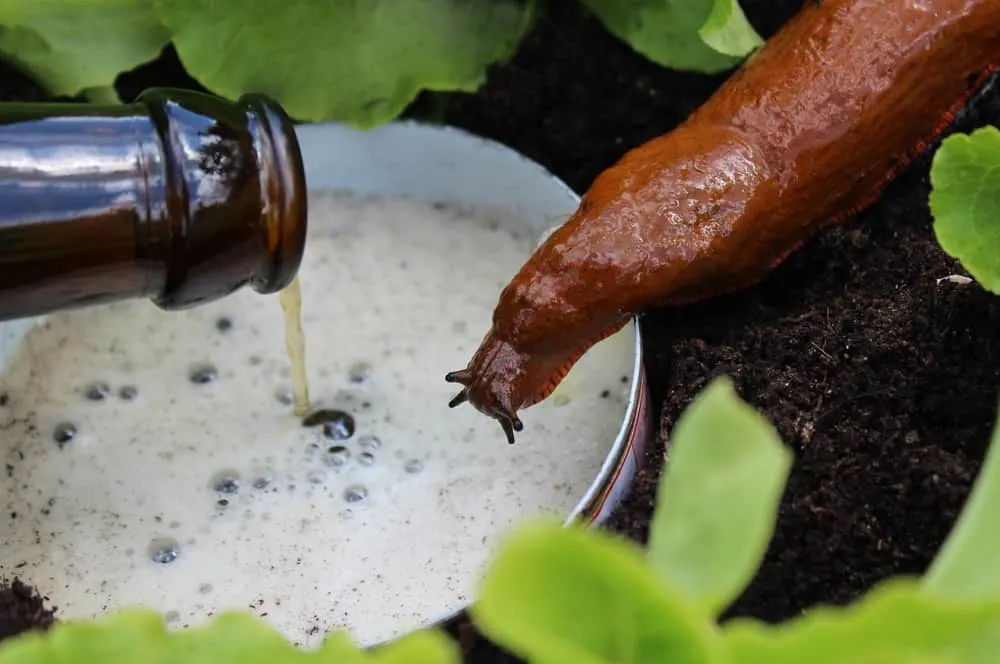
To create a beer trap, fill a dish or bucket with beer and place it at soil level in the garden around the plants. The slugs are attracted to the beer and will drown once they land in it. Always water in the morning to ensure the top layer of soil and the leaves are dried by the evening.
8. Spider Mites
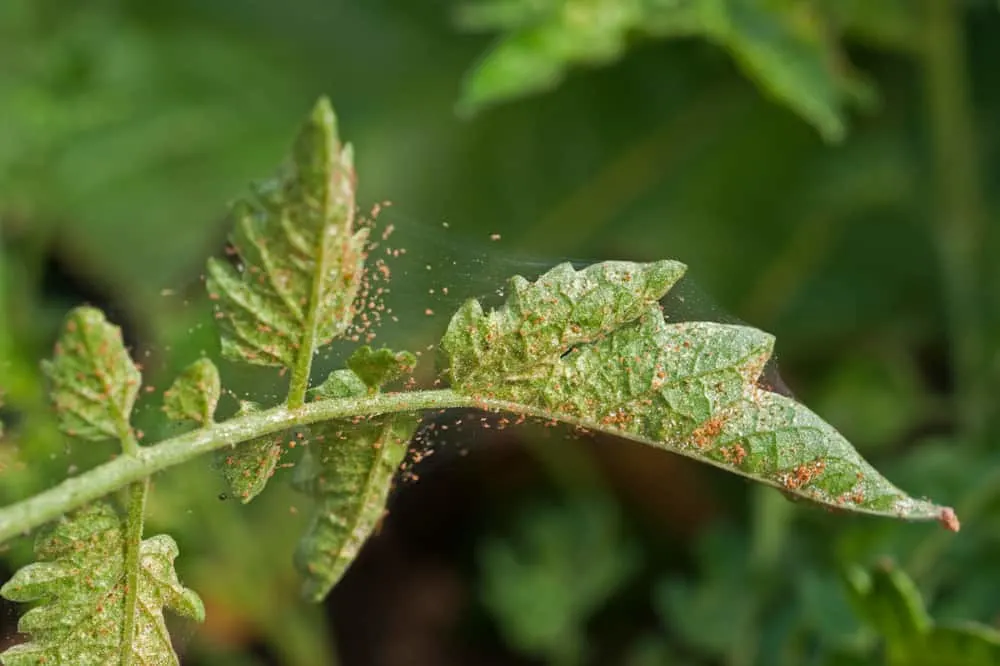
Spider mites are common in various climates but typically enjoy hot and dry weather. They infest in large groups, settling on the underside of leaves. The dainty webbing around leaves and stems will give them away.
A common symptom of spider mites is yellowing or reddish leaves. These little spiders suck the sap out of the plant. They will eventually cause defoliation as affected leaves continue to die and fall off.
Small as they are, they are quite resilient against many insect sprays, and their large numbers are difficult to control. However, the trick is managing their environment. Watering constantly and correctly helps reduce spider mites, as does the introduction of good parasitic pests. Oil-based sprays are also effective against smaller infestations.
However, if webbing continues to tighten around the tomato plant and its health continues to deteriorate, you may need to destroy the plant to prevent further spread.
9. Tomato Fruit Worms
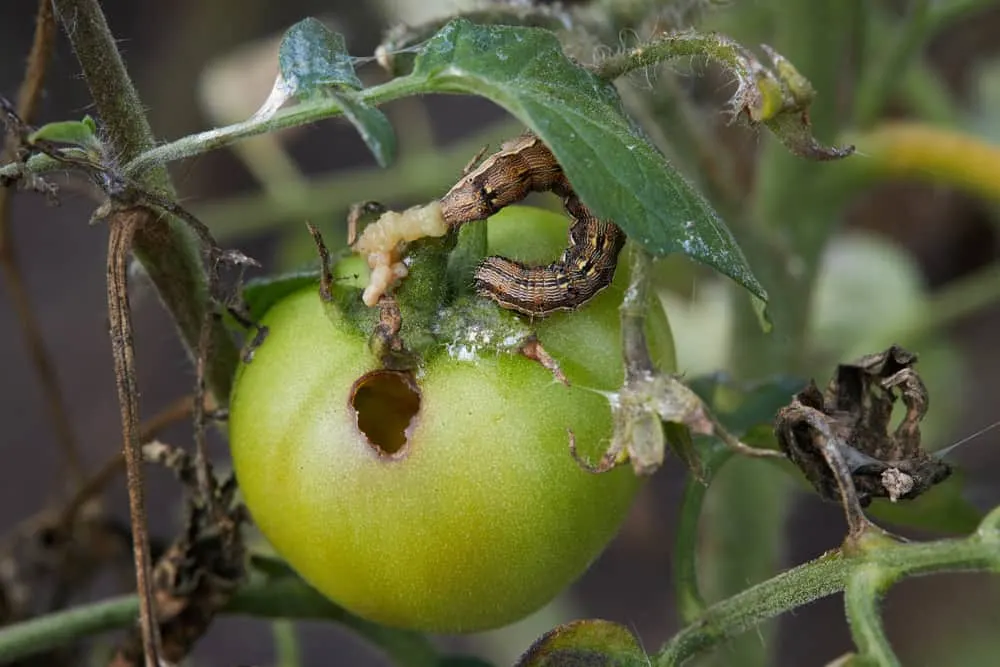
Tomato fruit worms, also known as corn earworms, are considered among the most damaging of tomato pests. They are known for attacking tomatoes, peppers, corn, and even tobacco.
These worms feed on tomato leaves and flesh, leaving distorted leaves behind. Their larvae bore into the fruit’s stalks and fruits, making them incredibly difficult to spot and remove without damaging the plant.
Adult tomato fruit worms are moths. Their larvae are greyish-yellow and around two inches long, laid in white eggs. These eggs can be found on the lower sides of smaller leaves, close to the fruits. Once hatched, the larvae will burrow into nearby fruit.
Handpick the worms or eggs off as soon as they appear. A good natural option to rid your plants of tomato fruit worms is introducing natural predators. These include minute pirate bugs and certain species of wasps. Avoid planting tomatoes near corn and completely destroy all infested fruit once identified.
10. Whitefly
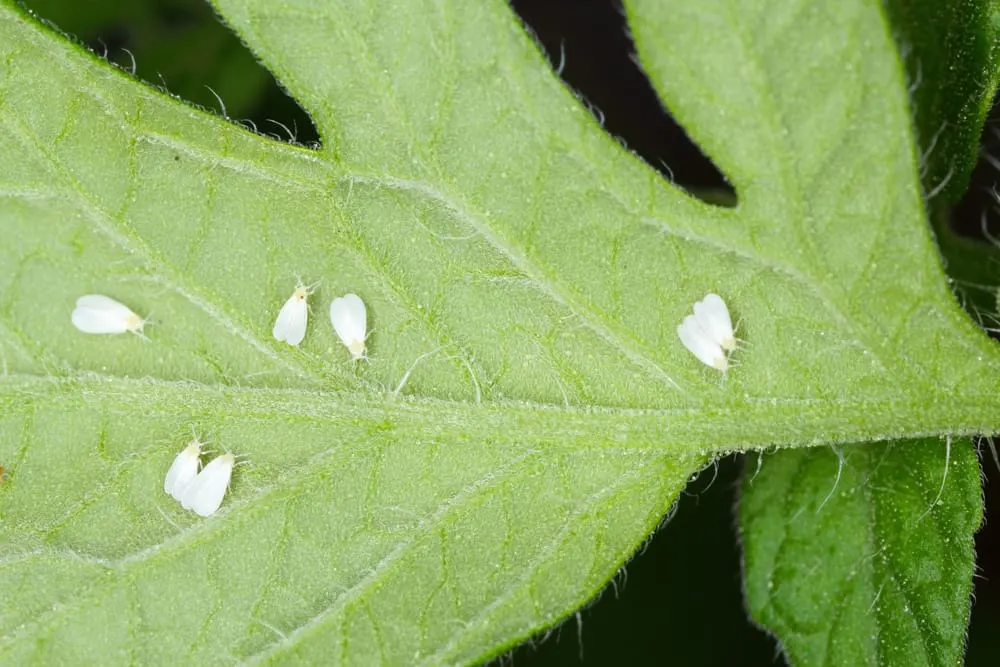
Whiteflies are minute insects, similar to aphids. They mostly affect tomatoes grown in greenhouses or indoors. Much like aphids, these pests enjoy sucking the sap out of the plant, affecting the overall growth of your plant. Whiteflies cause leaves to yellow and yield to reduce.
It is important to prevent and control whitefly infestations quickly as they can carry diseases. ‘Good’ insects, such as ladybugs, will reduce whitefly populations. Further, horticultural oil can be used to suffocate whiteflies at any stage of life.
The biggest takeaway from pest management (besides the fact that it is incredibly important) is that prevention is better than tackling an infestation.
Tilling soil, crop rotation, correct watering methods, keeping your plants generally healthy, and keeping a close eye out for signs of pests are invaluable tools in pest prevention. As a bonus, they will also protect your plants from disease.
